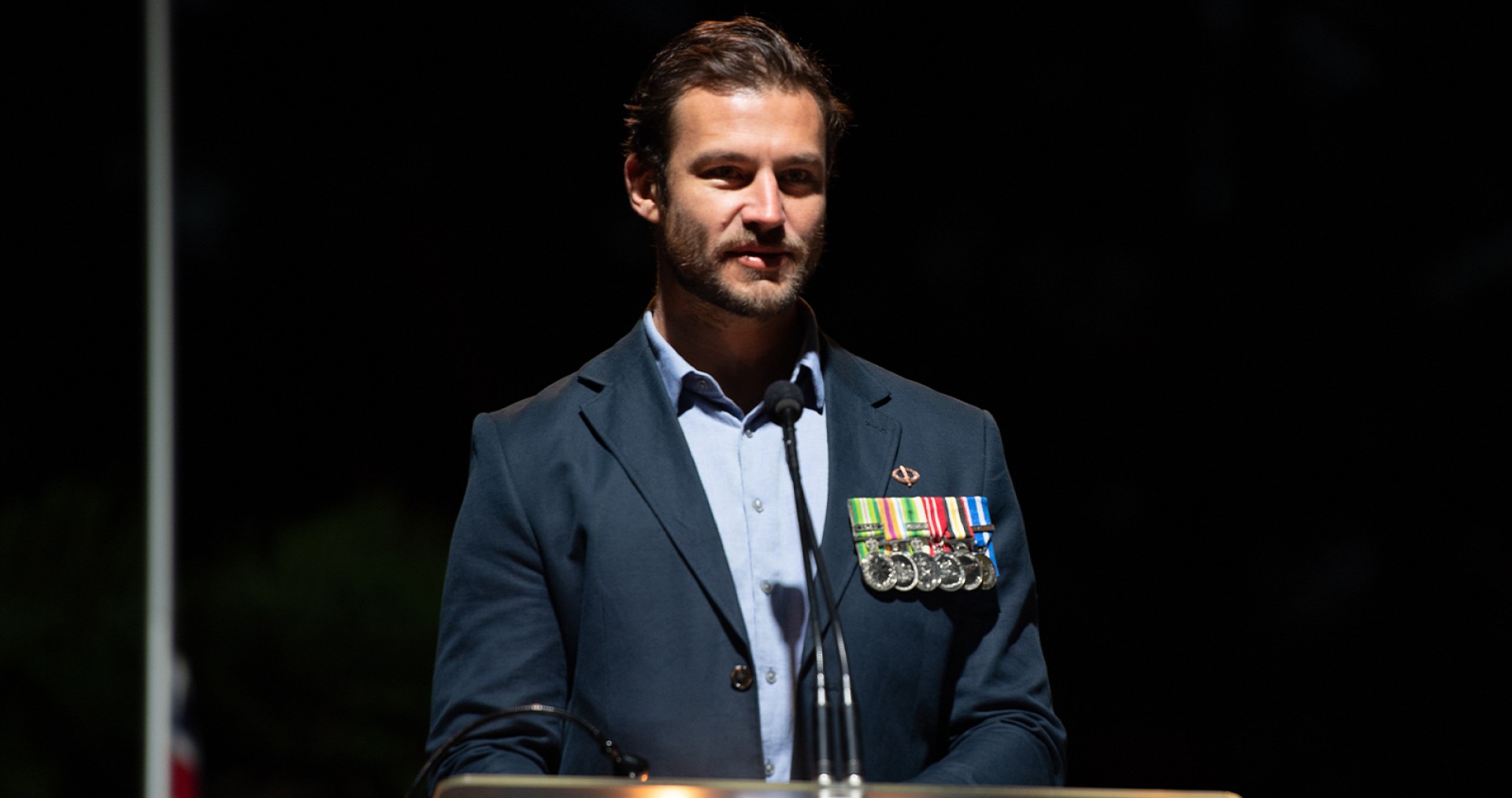Dawn Service Speech
The ANZAC Legend
Just before dawn on a Sunday much like this one, 25th of April 1915, young Australian and New Zealand men, sat nervously in wooden rowboats, preparing to storm the beach at Gallipoli.
This was not a scene from a Hollywood movie. These boys were young, some, like James Charles Martin as young as 15. They were nervous, they were anxious, they were scared. But regardless of their fear, they rowed on, into the darkness, to meet their fate.
Charles Bean wrote:
“It lay in the mettle of the men themselves.
To be the sort of man who would give way, when his mates were trusting to his firmness.
To live the rest of his life haunted by the knowledge that he had set his hand to a soldier’s task and had lacked the grit to carry it through.
That was the prospect these men could not face.
Life was very dear, but life was not worth living unless they could be true to their idea of Australian manhood.”
16000 ANZACs landed on the beach that Sunday in 1915, 2000 of them would not live to see the sunset.
The initial phase of the landing was uneventful.
At 18 minutes past four, the first boat grounded.
The men, mostly miners from Queensland, Broken Hill and the Western Australian goldfields, prepared to hit the beach.
So far, not a shot had been fired.
Colonel Mclagan, the Brigade Commander in charge of the first landing party, had given orders that no shots were to be fired before daybreak, the business was to be carried out with the bayonet.
The men began jumping out of the wooden boats into the water near the shore. As the first of them hit the beach, a barrage of gunfire erupted from trenches at the foothills.
Bullets struck rock and stone, exploding like fireworks as more and more ANZAC boats hit the shore. The men didn’t wait to be shot, they rushed straight up the steep slopes.
Turks in the trenches facing the landing had fixed their sights on the incoming boats, paying little attention to the ANZACs rushing the beach.
Before they had time to realise, a wave of ANZACs was on top of them.
The Turks fled, unwilling to chance the bayonet.
The rest of the day saw the front line of troops scaling ridgelines and clearing trenches.
Under constant machine gunfire and artillery bombardment.
By night, the boats still coming ashore saw a digger in the distance, silhouetted on a ridgeline, resting against his shovel.
This sent a wave of calm over the men.
Enough ground had been cleared to form a beachhead.
The ANZACs had failed to secure their high ground objectives. And the Turks continued to send reinforcements, mounting fierce counter-attacks and retaking much of the ANZAC ground.
Mustapha Kemal, Turkish Commander who later became president of Turkey, gave the order to his men:
“I don’t order you to fight, I order you to die. “In the time it takes us to die, other troops and commanders can come and take our places.”
The Australian advance came to a halt. For the next 8 months, no more ground was taken.
Then in December that year, they executed a successful evacuation from ANZAC cove.
This evacuation made famous by the low number of casualties suffered, as a result of the ANZAC deceptive tactics and drip rifles.
The Gallipoli campaign was a military failure. But it did give birth to the ANZAC Legend.
A legend forged by the larrikin nature, the bravery, the ingenuity, the endurance and mateship of the ANZAC soldiers. These characteristics have become celebrated parts of the Australian personality and culture.
Australian soldiers, sailors and airmen would continue striving to live up to this ANZAC legend for all future operations.
In places like.
-
Europe for the Second World War
-
Occupation of Japan
-
Korean War
-
Malayan Emergency
-
Indonesian Confrontation
-
Vietnam War
-
Gulf War
-
Afghanistan
-
Iraq
-
Timor Leste, Somalia, Rwanda, Solomon Islands and many more.
The ANZAC spirit lived on and our service people continued pushing the boundaries of larrikinism, using ingenuity and relying on the strength of enduring mateship.
In recent times the media, social media, and shifting global political values have seen changes in public perception of military and ANZAC values.
Dawn service numbers have been shrinking. The national respect is shifting.
Not by those here today, but by many.
It’s days like today we must remind everyone why the ANZAC values mean so much.
To me, to servicemen and women, to those attending this morning, and to many Australians.
No soldier, not in 1915, and definitely not today... No soldier joins the military to fight for politicians. No soldier joins to fight for generals.
We do not choose the wars nor the enemy.
We choose to serve.
If the world is at war, or other people need our help, the ANZAC spirit is what drives us to overcome fear and put the needs of these people before ourselves.
We don’t join to fight because of that which we hate,
We join to fight for that which we love.
I ask you all to Look to your left. Then to your right. That’s who we fight for.
We fight for our families at home, we fight for our community, we fight for the Australian way of life, and more than anything, we fight for the mates by our side.
With so much at stake, we often fight with fear in our hearts... But we fight non the less….
This is the ANZAC Way.
